The Rosewill Hive 850W PSU Review
by E. Fylladitakis on July 28, 2015 9:00 AM EST- Posted in
- PSUs
- Cases/Cooling/PSUs
- Rosewill
- 850W
Hot Test Results
As we can see in the results displayed in the following tables, the Rosewill Hive 850W offers acceptable power quality considering its price range and performance class. The maximum ripple on the 12V line was 40mV under full load, a very good figure. However, the Hive 850W is not really fond of getting cross-loaded, as the ripple of the 12V line increased by over 50%. Nevertheless, 64mV is a mere half of the 120mV design limit. Voltage regulation could see some improvement, as we recorded a fluctuation of 3.4% for the 12V line and about 2.5% for the 3.3V/5V lines. On an absolute basis these are good figures, but relatively speaking high performance products nowadays rarely surpass 2%.
| Main Output | ||||||||
| Load (Watts) | 174.13 W | 432.52 W | 633.8 W | 841.92 W | ||||
| Load (Percent) | 20.49% | 50.88% | 74.56% | 99.05% | ||||
| Line | Amperes | Volts | Amperes | Volts | Amperes | Volts | Amperes | Volts |
| 3.3 V | 2 | 3.39 | 4.99 | 3.38 | 7.48 | 3.32 | 9.98 | 3.31 |
| 5 V | 2 | 5.08 | 4.99 | 5.07 | 7.48 | 5 | 9.98 | 4.95 |
| 12 V | 12.79 | 12.29 | 31.97 | 12.21 | 47.95 | 11.92 | 63.93 | 11.88 |
| Line | Regulation (20% to 100% load) |
Voltage Ripple (mV) | |||||
| 20% Load | 50% Load | 75% Load | 100% Load | CL1 12V |
CL2 3.3V + 5V |
||
| 3.3V | 2.4% | 8 | 16 | 24 | 30 | 12 | 26 |
| 5V | 2.6% | 12 | 18 | 30 | 34 | 14 | 34 |
| 12V | 3.4% | 16 | 22 | 28 | 40 | 64 | 16 |
Meanwhile the Hive 850W's temperature rating of 40°C is not doing it any favors in our hot test. As we run our hot test at temperatures over 45°C, the Hive is operating outside of its comfort zone. Reducing the ambient temperature of our hotbox testing to base it around the Hive's 40°C is an option here, but ultimately we chose not to do so as any change for the Hive 850W in particular would mean that the results here would not be comparable with our previous reviews.
High ambient temperatures have a strong negative effect on the electrical performance of the Hive 850W. The energy conversion efficiency is reduced by an average of just 1.5%, yet the effect is stronger at high loads, where the performance of the Hive 850W was already suffering. Considering that this unit is rated at 40°C and we have over 50°C ambient temperature with the Hive 850W under maximum load, these are overload conditions for this unit and it shows, as the efficiency drop is over 2.4% and the internal temperatures are very high.
The high internal temperatures of the Hive 850W decrease the efficiency of its active components, creating a cascading effect that increases the heavy load temperatures of the Hive 850W even further. The lack of efficiency combined with the simplistic cooling design creates a major thermal load that cannot be easily dissipated, leading to heatsink temperatures nearing 100°C under maximum load. There is little that the small and plain heatsinks of the PSU can do under these conditions, leaving the fan to cope with the high thermal load. As a result, the fan reached its maximum speed, generating intolerable noise levels while the PSU was heavily loaded inside the hotbox.


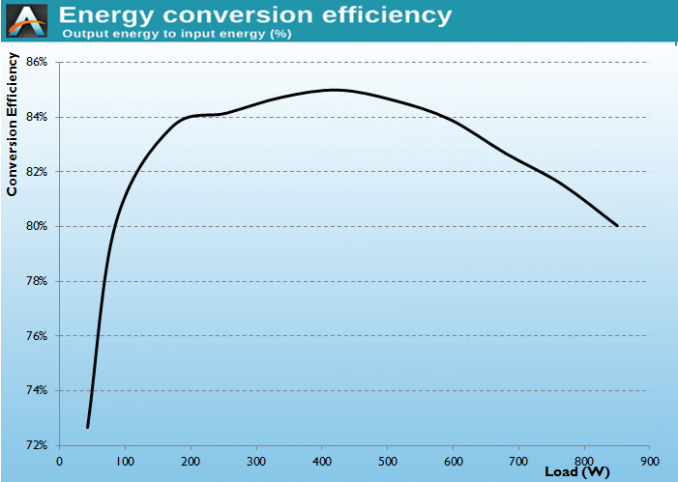
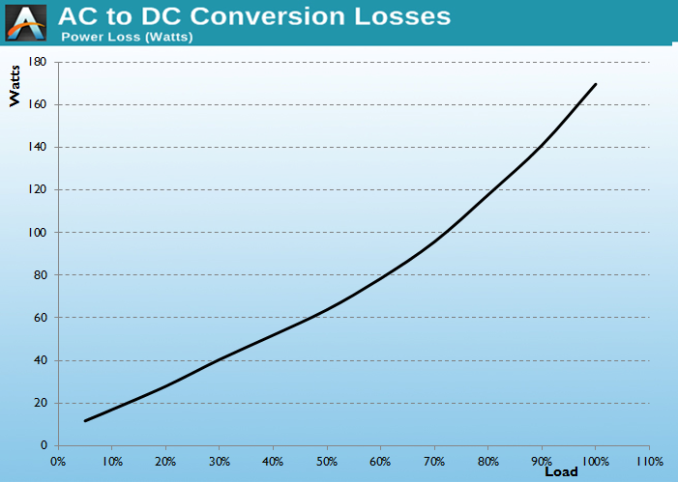
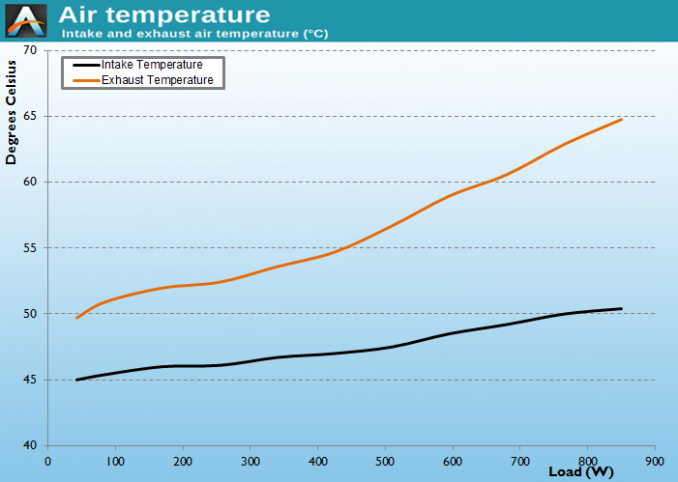
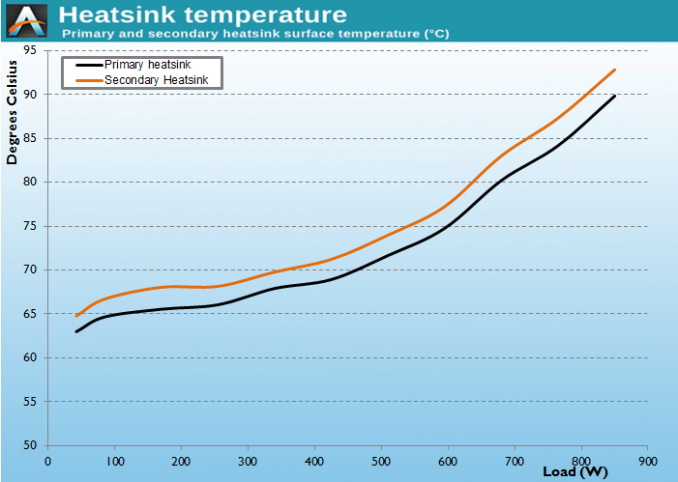
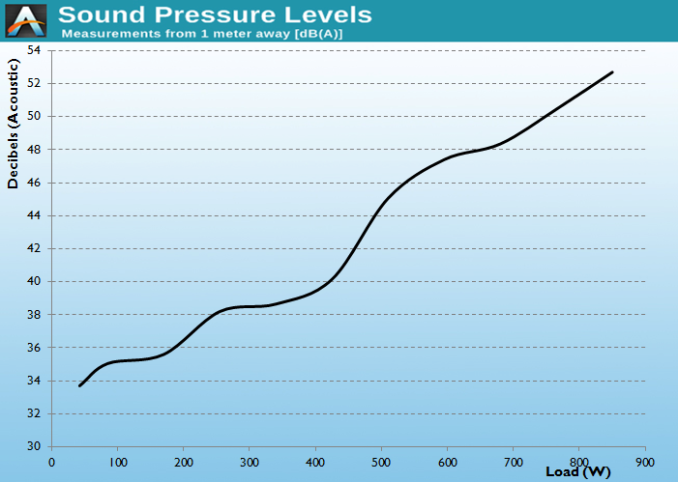








24 Comments
View All Comments
ImSpartacus - Tuesday, July 28, 2015 - link
As a layman, this was a cool review to read. It's often hard to figure out exactly what makes one psu different from another with similar marketing "specs". It's assumed that many are based on a handful of oem's designs, but it can be a challenge to dig that deep. This review presents much of that info up front. No digging necessary. Cool beans.Stuka87 - Tuesday, July 28, 2015 - link
The 12V rail sag is a bit more than I would like. And the fact that its only rated for 40C is really a bummer. Its very common for the inside of a PC case to hit 45-50C, especially in the summer with a few GPU's inside it. Some cases do let you put the PUS in upside down so it sucks in cool air (my own does) but many do not.MamiyaOtaru - Wednesday, July 29, 2015 - link
cases that don't put the PSU at the bottom are an anachronism IMHOAndrewJacksonZA - Tuesday, July 28, 2015 - link
Were these tests done at 110V or 220V?E.Fyll - Tuesday, July 28, 2015 - link
230V/50Hz. It is noted in the pipeline that includes the details of all the equipment and procedures.piasabird - Tuesday, July 28, 2015 - link
How do you know what this means unless you have a few other power supplies as a baseline to draw a comparison. For instance if you had what you considered is the best test results for a power supply, and one or two other the test results might make more sense. You always show comparisons for processors and video cards.Oxford Guy - Wednesday, July 29, 2015 - link
An entire article just for one PSU?doggface - Wednesday, July 29, 2015 - link
Have you been here before. They do this all the time???Oxford Guy - Wednesday, July 29, 2015 - link
It's one thing for a little site to devote an entire article to a bronze PSU and another thing for a big one to do so.Quake - Monday, August 3, 2015 - link
Eh... Anandtech was founded in 1997 and it's one of the biggest enthusiast website. https://en.m.wikipedia.org/wiki/AnandTech